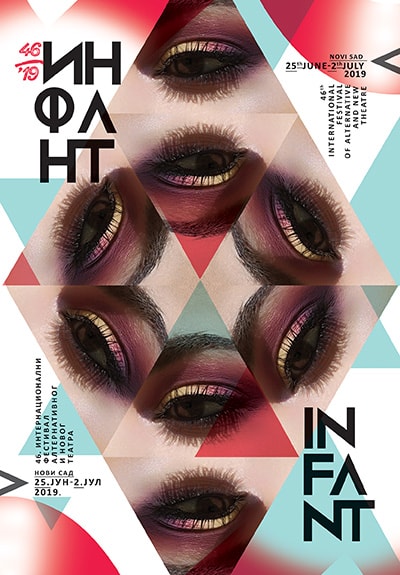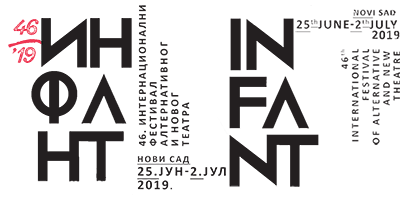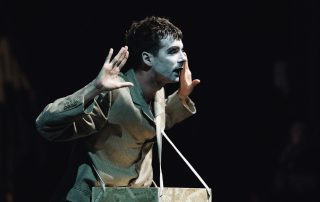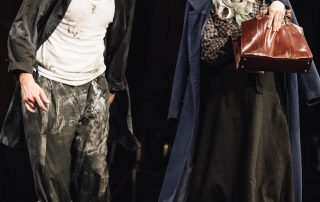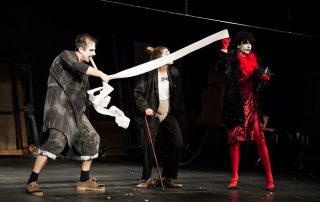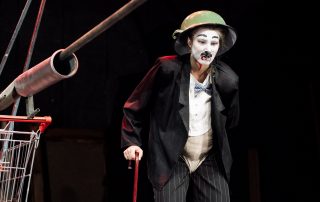HOW MUCH IS YOUR IRON?
The Faculty of Dramatic Arts, Serbia
After the motifs of the drama “How Much Is Your Iron?” and poems “A Customer”, “What Good is Being Good?” and “From the German War Primer” by Bertolt Brecht
Croatian translation: Ante and Truda Stamać
Adaptation and Serbian translation: Rastislav Ćopić and Đorđe Kosić
Directed by Rastislav Ćopić
Dramaturge and author “The Shopkeeper’s Song on Friendship” and “Swendson’s Song Celebrating Life”: Đorđe Kosić
Composer and Accompanist: Petra Perović
Stage Design: Dunja Kostić
Costumes: Sofija Milovanović
Mask Design: Marija Stošić
Lights Design: Gordana Pantelić
Poster Design: Dimitrije Prelić
Producer: Marija Simić
Organiser: Aleksandra Popović
Cast: Jovan Jelisavčić, Nikola Šurbanović, Vladimir Nićiforović, Srna Đenadić, Petra Perović
Running time: 55’
The Academy of Theatre Arts was founded in 1948. The first professors of acting were Mata Milošević and Jozo Laurenčić. In the early 1960s, following the orientation of extending curricula with the media development, two new study groups were formed, significantly extending the educational activities. This invited the change of the name to the Academy for Theatre, Film, Radio and Television in 1962, only to be changed again by the end of 1973 to its present name – the Faculty of Dramatic Arts (of Theatre, Film, Radio and Television). Graduates of the Academy and the Faculty of Dramatic Arts, with their creative engagement, have had an overwhelming presence in the entire cultural-artistic environment of our country. The Faculty of Dramatic Arts has been an institution of higher education where criteria are formed in the fields of dramatic arts for 65 years. It is a school that has given the most important creators and has given a great contribution to the high level of the Yugoslav and Serbian theatre, cinema, radio and television.
The almost forgotten and rarely staged didactic Brecht’s play “How Much Is Your Iron” is a parable on strengthening and spread of fascism in Europe immediately before World War II, shown through a prism of a small craftsmen and traders’ neighbourhood which is a direct allegory of the relationships among European states in 1938 and 1939. In the form of a macabre cabaret, this play offers an exciting, witty, expressionistic, gruesome play full of grotesque and recognisable types who will make you laugh, but also make you ask yourself what happens when we bury our heads in the sand in the face of an advancing evil.
In our production, we focused on universal, social and individual mechanisms of spreading evil: how does a darkness of one empty stomach leads to an entire society’s imprisonment? Why does ordinary man with all his archetypical features, his actions or the lack thereof, allow fascism to prevail?
Rastislav Ćopić
